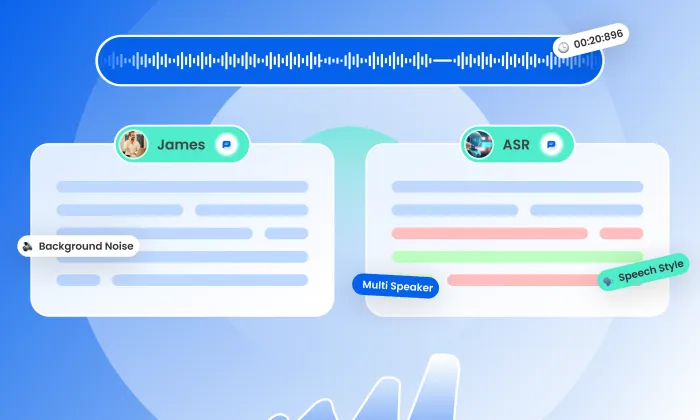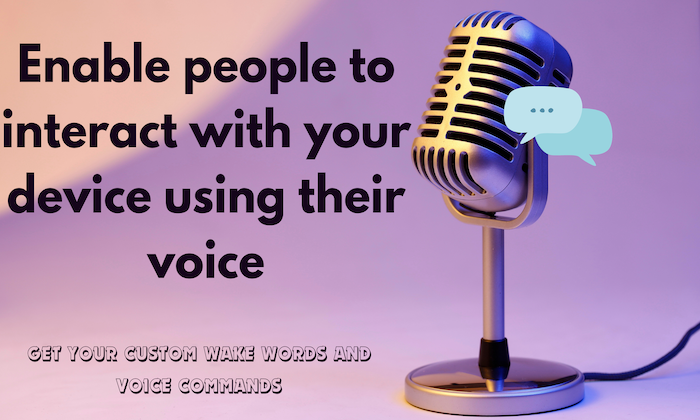How to test wake word performance in production?
Wake Word
Performance Testing
Speech Recognition
Ensuring the accuracy and efficiency of wake word detection is essential for the success of voice-activated systems. Effective testing strategies can enhance user experience by improving recognition accuracy, reducing latency, and ensuring reliable performance across diverse environments. Here’s how you can optimize wake word performance in production using proven strategies.
Quick Answer
To ensure wake word detection accuracy in production, focus on:
- Defining key performance metrics like FAR, FRR, and detection latency.
- Conducting real-world testing across diverse environments.
- Utilizing A/B testing for model comparison.
- Implementing continuous model performance monitoring and feedback loops.
- Regularly refining and retraining models with up-to-date data.
Why Voice Assistant Testing & Wake Word Detection Accuracy Matter
Accurate wake word detection is essential for:
- User Engagement: Enhances interaction and intuitiveness, making voice assistants more reliable and engaging.
- Brand Reputation: Builds trust and loyalty through consistent and dependable performance.
- Market Competitiveness: Provides a technological edge in the voice assistant market by offering faster, more responsive, and precise systems.
Wake Word Dataset & Model Primer
Wake word detection relies on machine learning models trained with diverse datasets. Utilizing FutureBeeAI's OTS wake-word datasets, which cover over 100 languages, can accelerate data preparation. These datasets come in high-quality WAV+JSON bundles, ready for integration into your training pipeline. Our YUGO platform also supports custom dataset creation tailored to specific wake words, accents, or environments.
Step 1: Define Key Performance Metrics
To evaluate wake word performance, focus on:
- False Acceptance Rate (FAR): Measures incorrect recognitions (when the system mistakenly activates on non-wake words).
- False Rejection Rate (FRR): Measures missed recognitions (when the system fails to activate on correct wake words).
- Detection Latency: Time from utterance to response, impacting user experience.
- Robustness: Performance consistency across varying environmental factors, such as noise or signal interference.
Pro Tip: Always log raw pre-trigger audio to investigate false-accept events and enhance model accuracy.
Step 2: Real-World Voice Assistant Testing Across Environments
Simulate actual usage conditions by testing with:
- Diverse Speaker Profiles: Include a range of ages, genders, and accents to ensure the model works across demographics.
- Environmental Variability: Test in different settings like noisy streets, offices, or quiet rooms to assess model robustness in varied environments.
- Usage Contexts: Mimic real user interactions, such as issuing commands while multitasking, to ensure responsiveness under real-world conditions.
Step 3: Utilize A/B Testing
A/B testing allows you to compare different models or configurations by deploying them to separate user groups. This helps identify which model performs best under specific conditions, providing valuable insights for model optimization.
Pro Tip: Use our YUGO platform to automate error-analysis reports and deliver insights directly to your monitoring dashboard, making it easier to pinpoint areas of improvement.
Step 4: Implement Model Performance Monitoring & Speech Recognition QA
Continuous monitoring is vital for maintaining performance:
- In-App Analytics: Track detection rates and user interactions to detect and address issues quickly.
- User Feedback Mechanisms: Enable issue reporting directly from users to address specific pain points or edge cases.
- Threshold Calibration & ROC Analysis: Tune detection thresholds using ROC curves and AUC to balance FAR vs. FRR, ensuring optimal performance across conditions.
Step 5: Refine and Retrain Models Regularly
Use the data collected from real-world usage to update models, adapting them to new speaking patterns, environments, or changes in user behavior. This iterative process ensures sustained performance and relevance as voice-activated systems evolve.
Real-World Impacts & Use Cases
A leading smart home device manufacturer improved user engagement by 30% after integrating FutureBeeAI’s custom dataset. The enhancements reduced detection latency from 250 ms to under 150 ms and improved FAR by 40%. Similarly, an automotive OEM achieved 98% wake-word recall using our multi-environment recordings for in-cabin noise testing.
By leveraging FutureBeeAI’s comprehensive datasets and YUGO platform, you can build robust, high-performing wake word detection systems tailored to your specific needs. Whether you require off-the-shelf datasets or bespoke solutions, FutureBeeAI provides the tools necessary for optimizing voice assistant testing and ensuring wake word detection accuracy.
For projects requiring advanced voice recognition capabilities, contact FutureBeeAI to explore how our offerings can support your development goals and enhance your model’s performance in real-world scenarios.
What Else Do People Ask?
Related AI Articles
Browse Matching Datasets
Acquiring high-quality AI datasets has never been easier!!!
Get in touch with our AI data expert now!








